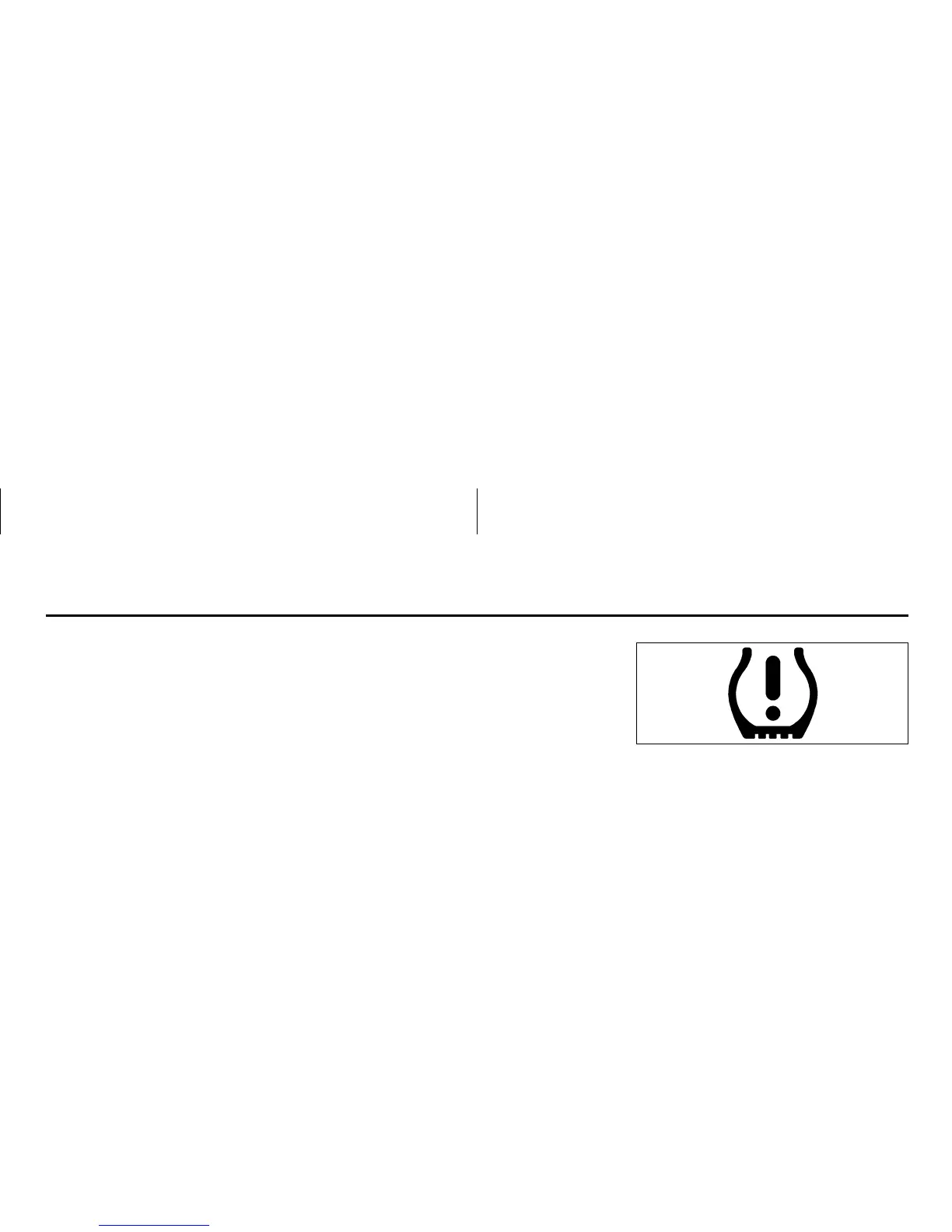5-32
SERVICE AND APPEARANCE CARE
78J01-03E
the telltale will flash for approximately one
minute and then remain continuously illu-
minated. This sequence will continue upon
subsequent vehicle start-ups as long as
the malfunction exists.
When the malfunction indicator is illumi-
nated, the system may not be able to
detect or signal low tire pressure as
intended. TPMS malfunctions may occur
for a variety of reasons, including the
installation of replacement or alternate
tires or wheels on the vehicle that prevent
the TPMS from functioning properly.
Always check the TPMS malfunction tell-
tale after replacing one or more tires or
wheels on your vehicle to ensure that the
replacement or alternate tires and wheels
allow the TPMS to continue to function
properly. Refer to “Tire Pressure Monitor
Operation” in this section, for additional
information.
Federal Communications Commission
(FCC) and Industry and Science Canada
The Tire Pressure Monitor System (TPMS)
operates on a radio frequency and com-
plies with Part 15 of the FCC Rules. Oper-
ation is subject to the following two
conditions:
1) This device may not cause harmful
interference.
2) This device must accept any interfer-
ence received, including interference
that may cause undesired operation.
The Tire Pressure Monitor System (TPMS)
operates on a radio frequency and com-
plies with RSS-210 of Industry and Sci-
ence Canada. Operation is subject to the
following two conditions:
1) This device may not cause interference.
2) This device must accept any interfer-
ence received, including interference
that may cause undesired operation of
the device.
Changes or modifications to this system by
other than an authorized service facility
could void authorization to use this equip-
ment.
Tire Pressure Monitor Operation
The Tire Pressure Monitor System (TPMS)
is designed to warn the driver when a low
tire pressure condition exists. TPMS sen-
sors are mounted onto each tire and wheel
assembly, excluding the spare tire and
wheel assembly. The TPMS sensors moni-
tor the air pressure in the vehicle’s tires
and transmits the tire pressure readings to
a receiver located in the vehicle.
1198521
When a low tire pressure condition is
detected, the TPMS illuminates the low tire
pressure warning light located on the
instrument panel cluster. At the same time
a message to check the pressure in a spe-
cific tire appears on the Driver Information
Center (DIC) display screen. The low tire
pressure warning light and the DIC warn-
ing message come on at each ignition
cycle until he tires are inflated to the cor-
rect inflation pressure. Using the DIC, tire
pressure levels can be viewed by the
driver. For additional information and
details about the DIC operation and dis-
plays refer to “DIC Operation and Displays”
and “DIC Warnings and Messages” in
“Driver Information Center (DIC)” in the
“Instrument Panel” section.
The low tire pressure warning light may
come on in cool weather when the vehicle
is first started, and then turn off as you
start to drive. This could be an early indica-
tor that the air pressure in the tire(s) are
getting low and need to be inflated to the
proper pressure.

